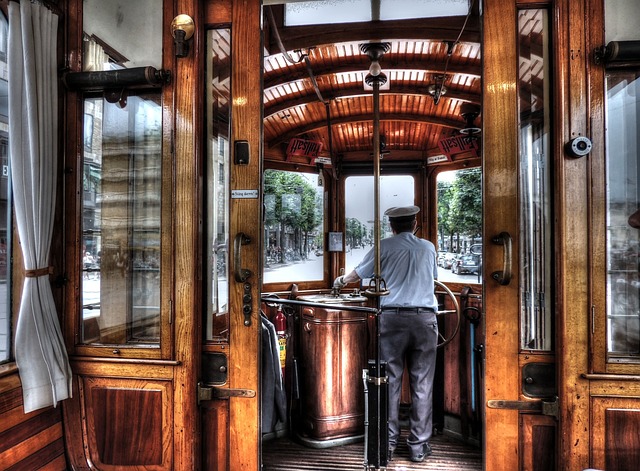London’s tramways, an essential part of the city’s rich transportation history, date back to the late 19th century. The first horse-drawn trams appeared in 1861, marking the beginning of a new era in urban transport. These early trams were soon replaced by electric trams, which dominated the streets of London by the early 20th century. Today, we take a look at the history, key routes, and the current state of London’s vintage trams, offering practical tips for enthusiasts and travelers alike.
The Historical Evolution of London’s Trams
The story of London’s trams begins with the introduction of horse-drawn tramways. These were operated by various private companies and provided an efficient means of transport for the growing urban population. By the 1890s, technological advancements led to the electrification of the tram network. The London County Council (LCC) played a pivotal role in this transformation, investing heavily in the new electric trams, which offered a smoother and faster ride. By 1903, the first electric tram route was launched, running from Westminster to Tooting.
During their heyday, London’s trams were a common sight, serving areas that were otherwise poorly connected by the burgeoning underground system. The network reached its peak in the 1930s, with over 327 miles of track and hundreds of trams operating across the city. However, the rise of buses and the expansion of the underground network led to the gradual decline of tram services. By 1952, the last tram ran through London, marking the end of an era. Yet, the legacy of these trams lives on through preserved routes and historical exhibitions.
Exploring the Key Routes of London’s Vintage Trams
Several routes are notable for their historical significance and enduring charm. The original tramways, such as those running from Aldgate to Barking, provide a fascinating glimpse into the past. This route, one of the longest, highlighted the importance of connecting outer boroughs with central London. Another significant route was from Westminster to Tooting, which not only showcased the efficiency of electric trams but also connected key commercial and residential areas.
For those interested in modern-day exploration, several heritage routes have been preserved or commemorated. The London Transport Museum operates tram rides at its Acton depot, offering visitors a chance to experience a ride on a restored tram. Additionally, the National Tramway Museum in Crich features vintage London trams, providing a comprehensive history of their development and operation.
The Croydon Tramlink, though a modern system, pays homage to the historical tramways of London. It connects several areas in South London, reviving the tram tradition with a contemporary twist. Visitors can enjoy a ride on the Tramlink while reflecting on the evolution from the vintage trams of yesteryear.
Tips and Trends for Tram Enthusiasts
For railfans and tram enthusiasts, London offers a treasure trove of historical sites and activities. Visiting the London Transport Museum is a must, as it houses a wealth of information and exhibits on the city’s transport history. The museum regularly updates its collections and offers interactive displays that engage visitors of all ages.
Participating in heritage tram rides is another great way to experience the charm of vintage trams. The Tramlink system, while modern, can provide insights into how tram networks operate in a contemporary urban environment, linking historical appreciation with modern-day functionality.
Enthusiasts should also keep an eye out for special events and exhibitions. The annual Open House London event often includes behind-the-scenes tours of historical transport sites, including tram depots and workshops. Additionally, the National Tramway Museum hosts themed weekends and special events that delve into various aspects of tram history and operation.
To fully appreciate the rich history of London’s trams, consider exploring related literature and documentaries. Numerous books and films delve into the intricate details of tramway operations, offering deeper insights and historical context. Joining online forums and local enthusiast groups can also provide valuable information.
Notable Tram Routes and Their Historical Significance
London’s tram network was once vast, covering many important routes that connected various parts of the city. Here, we highlight some of the most notable tram routes, offering an overview of their historical significance and the areas they served.
Aldgate to Barking
The Aldgate to Barking route was one of the longest and most significant tram routes in London. It played a crucial role in connecting the eastern suburbs with the commercial heart of the city. This route highlighted the importance of trams in providing accessible transportation to working-class communities.
- Key Highlights:
- Connected central London with the eastern suburbs
- Served as a major artery for commuters
- Played a vital role in urban development along the route
Westminster to Tooting
The Westminster to Tooting route was among the first to showcase the efficiency of electric trams. This route was notable for linking important commercial and residential districts, demonstrating the potential of electric traction in urban transport.
- Key Highlights:
- One of the first electric tram routes
- Enhanced connectivity between central and southern London
- Promoted the adoption of electric trams citywide
Brixton to Clapham
The Brixton to Clapham route was a key south London tramway that facilitated travel between two bustling areas. This route underscored the role of trams in easing congestion and improving travel times in densely populated neighborhoods.
- Key Highlights:
- Connected two busy south London districts
- Reduced travel times significantly
- Encouraged residential and commercial growth along the route
Shepherd’s Bush to Liverpool Street
Running from Shepherd’s Bush to Liverpool Street, this route was essential for connecting west and east London. It provided a vital link for passengers traveling across the city, contributing to the integration of different urban zones.
- Key Highlights:
- Spanned west to east London, enhancing cross-city travel
- Played a significant role in the daily commute for many Londoners
- Supported the economic integration of different city areas
In summary, London’s vintage trams hold a special place in the city’s transport history. From their inception in the 19th century to their peak in the early 20th century, trams were integral to urban mobility. While the last tram may have run in 1952, their legacy continues through preserved routes, museums, and modern tram systems like the Croydon Tramlink. For enthusiasts and travelers, exploring these historical routes offers a unique window into the past and a deeper appreciation for the evolution of urban transport.



